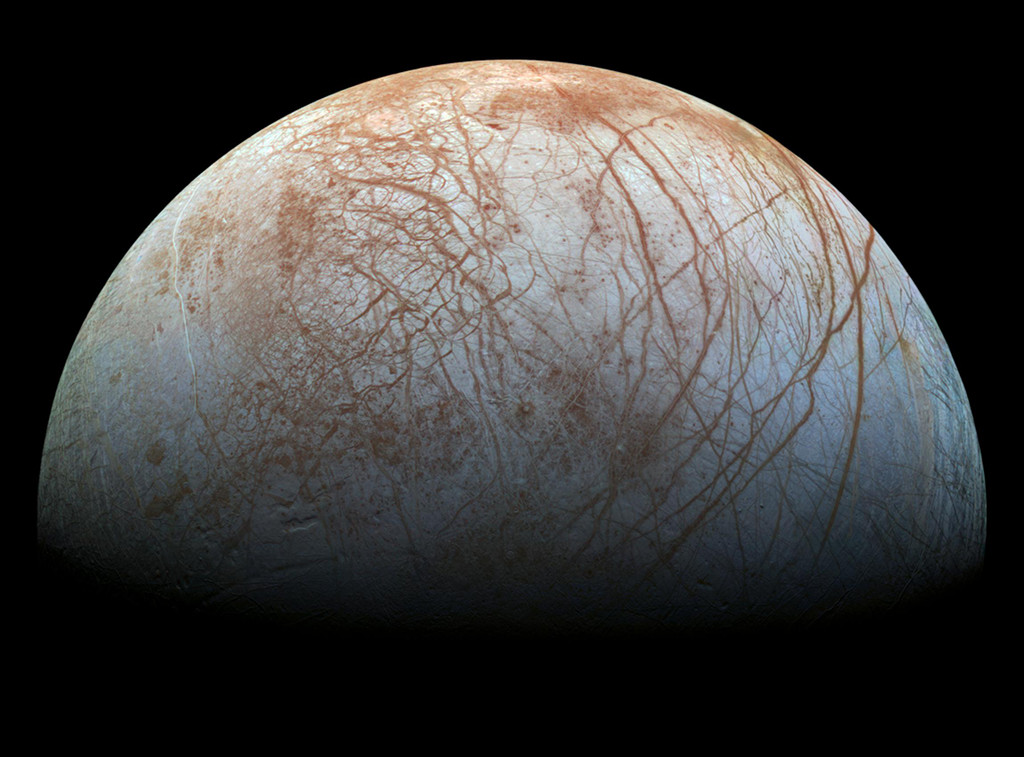2024年3月29日
Galileo’s Europa
Image Credit: NASA, JPL-Caltech, SETI Institute, Cynthia Phillips, Marty Valenti
Explanation: Looping through the Jovian system in the late 1990s, the Galileo spacecraft recorded stunning views of Europa and uncovered evidence that the moon’s icy surface likely hides a deep, global ocean. Galileo’s Europa image data has been remastered here, with improved calibrations to produce a color image approximating what the human eye might see. Europa’s long curving fractures hint at the subsurface liquid water. The tidal flexing the large moon experiences in its elliptical orbit around Jupiter supplies the energy to keep the ocean liquid. But more tantalizing is the possibility that even in the absence of sunlight that process could also supply the energy to support life, making Europa one of the best places to look for life beyond Earth. The Juno spacecraft currently in Jovian orbit has also made repeated flybys of the water world, returning images along with data exploring Europa’s habitability. This October will see the launch of the NASA’s Europa Clipper on a voyage of exploration. The spacecraft will make nearly 50 flybys, approaching to within 25 kilometers of Europa’s icy surface.
Tomorrow’s picture: Ptolemy’s astronomy
伽利略号的木卫二影像
影像提供: NASA, JPL-Caltech, SETI Institute, Cynthia Phillips, Marty Valenti
说明: 1990年代末期在木星系统内旋绕的伽利略号宇宙飞船,拍摄了许多木卫二的精采影像,并找到这颗卫星冰封的表面之下,可能藏着一个全球性海洋的证据。上图呈现使用更佳校准技术重制的伽利略号彩色影像,以近似人类肉眼所见的色泽。木卫二的长弧状龟裂,暗示表面之下有液态水。而这颗大卫星,在绕行木星的椭圆轨道上所受到的引潮力搓揉,则是液态海洋得以存在的能源。但更引人遐想的是:在暗无天日的海洋里,这种过程或许也提供生命滋长所需的能量,因而让木卫二成为寻找地球外生命的最佳天体之一。目前在木星轨道上运行的朱诺号太空船,也曾多次飞越这个水世界,并回传许多影像及探索木卫二宜居性的数据。在今年十月,美国宇航局的欧罗巴快船探测器将展开探索之旅,并规划要进行将近50次飞越,以不到25公里的间距掠过木卫二的冰封表面。 (Europa Clipper 欧罗巴快船)
明日的图片: Ptolemy’s astronomy




Pingback: 奥米茄星团 – NASA中文